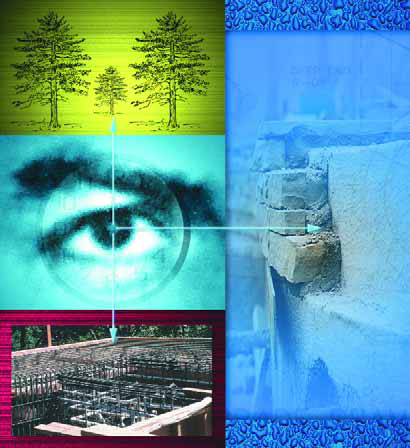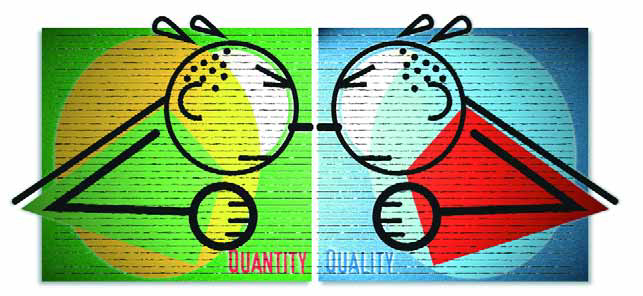Professional Watershaping
I started my May 2001 column by expressing the belief that watershape designers should be paid for their designs in the same way interior designers and landscape designers are paid for theirs - and by indicating that lots of watershapers I've met are interested in knowing more about the mechanics of how this works. I put off addressing those issues last time because I saw a need to establish criteria for offering such services in the first place. In other words, there's much more to being a watershape designer than simply declaring yourself to be one, and I set up two dozen questions intended to clarify what I meant. Once you've answered those questions predominantly in the affirmative, once you've determined, through
In October 1999, I wrote an Aqua Culture column titled "Value by Design" in which I explained my belief that watershape designers should be paid for their designs in the same way interior designers and landscape designers are paid for theirs. Since then, I've been contacted by lots of people who are interested in knowing more about how this works; I've also had the privilege of traveling throughout the United States and abroad to talk about watershape design and construction and have met hundreds of people with the same need for information. On the one hand, it's exciting to see the notion of a watershape-design specialty catching on: It isn't a foreign idea to people the way it used to be, and
In the past few issues of WaterShapes, I've used this column to share some very specific construction techniques with you - each one a special detail that I've used to add value and interest to my work. Before I did the first in the series, however, I probably should have laid down an important ground rule: Everything that you've seen in this column - and in the other articles and columns I've written and will write in the future - requires both constant and competent on-site supervision. It's a fact of life: The best design feature in the world isn't worth anything if it isn't executed properly. And no matter how good your in-house staff or subcontractors are, they need
During the past few years, I've come to the stark realization that there are too few quality craftspeople in most geographical areas of our country. And it's not just the watershaping trades: The same holds true for most
Whether you build fountains, streams or Olympic-size swimming pools, you need to install a pump of some kind to make these watershapes work. As fundamental and essential as pumps really are, however, it's amazing to think how casual many of us in the trade are when it comes to knowing about how they work and how their performance characteristics differ. We've all heard and used terms like "energy efficient," "high head" and "self-priming," but for the most part, the real meanings of those words get lost in the competitive marketing blizzard that surrounds these products. Without a clear understanding of how pumps are designed and how they do their job, these distinctions are no more than words on a label - and that's not the way it should be. As watershapes become ever more complex and hydraulically challenging, cutting through the hype to find out what truly makes pumps work becomes even more important: No matter how beautiful a design may be, without a properly selected and installed pump working at the heart of the system, the best work will fall short in
No one ever said that change was easy. In our case, in fact, it's been a struggle every step of the way. But even though we're still in the middle the process, I can tell already that it's been worth it - and that the best is yet to come. Lipinski Pools, an offshoot of Lipinski Landscaping in Mt. Laurel, N.J., has worked with pools as part of the company's overall landscaping business for several years now. We started by acting as general contractors and farming out a lot of the work. Using that approach, we
This is a story about a job that didn't happen - not yet, at any rate. It all started when I was brought in to bid on a hillside swimming pool project and ended months later, with the dust still settling and the project scuttled for the moment. And nobody could have been happier with that outcome than I was. That fact that my client and I decided to pull back and wait is not so unusual, but given the fact that the decision was driven by advanced military navigation technology makes this one of the most unusual situations I've ever encountered. The upshot
Most watershapers and their businesses have been (or at some point will be) exposed to some form of litigation. We do indeed live in a litigious society, and if you have yet to experience this sad reality at close hand, just wait a while: It's the nature of the contracting business, and your turn almost certainly will come. Doing battle in a courtroom has often been described as the world's most expensive indoor sport, one about a half step away from hand-to-hand combat. It's stressful, costly in time and money, incredibly distracting and generally no fun at all. In my own experience, litigation is the ultimate in misery and frustration: Even when you win, you walk away feeling like you've been through some kind of meat grinder. In an effort to stave off the costly, time-consuming, unpredictable and generally unsatisfying outcomes that all-too-often arise through the conventional judicial system, many companies have been turning in recent years to Alternative Dispute Resolution. In fact, this trend has so much momentum and respect that Congress passed the Alternative Dispute Resolution Act and the President signed it into law in October 1998. This legislation mandates that all federal courts must develop and implement ADR programs. I'm not always in support of things our government does, but in this case, I believe strongly that ADR programs and other mediation strategies can help all of us lift the
I remember several years ago, back before it was really fashionable to build completely naturalistic pools, that I decided this was exactly what I wanted to do. This was in the very early 80s, when you'd see maybe some rocks on the bond beam or a waterfall on the end of the pool - but that was about as natural as it got back then. My new idea was to create environments that were completely natural, stem to stern. I tried presenting the concept to a number of potential clients, explaining how we could do things like angle the top of the pool and install rocks all around the edge and create natural
As watershapers, we can look at the rest of the architectural world and see that every other genre is benefiting more than we are from computers. Bridge builders and skyscraper architects use computers to do everything from the simulated testing of three-dimensional structural models to the generation of detailed blueprints to be used on site. Even the designers of modest housing developments are now using computers to conduct 3-D virtual tours for prospective homebuyers and in specifying floor plans and






















